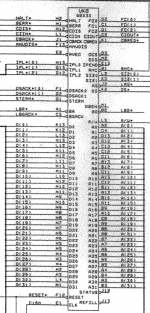uniserver
Well-known member
I have a dead LC-1 board and a LC-III.
Also, I have an oscilloscope, I think its an TEK one in the garage,
I would like to start this thread to help people that never used one, to maybe get a couple pointers
Its been years and years since i'v touched one.
In a NO Bong / No Videro situation, obviously you want to recap, first thing.
However if that doesn't help, then ...
I remember reading in another thread that you first check the bus lines for activity,
can someone provide some pictures or some posts to help with this?
Thank you very much ahead of time.
Also, I have an oscilloscope, I think its an TEK one in the garage,
I would like to start this thread to help people that never used one, to maybe get a couple pointers
Its been years and years since i'v touched one.
In a NO Bong / No Videro situation, obviously you want to recap, first thing.
However if that doesn't help, then ...
I remember reading in another thread that you first check the bus lines for activity,
can someone provide some pictures or some posts to help with this?
Thank you very much ahead of time.

